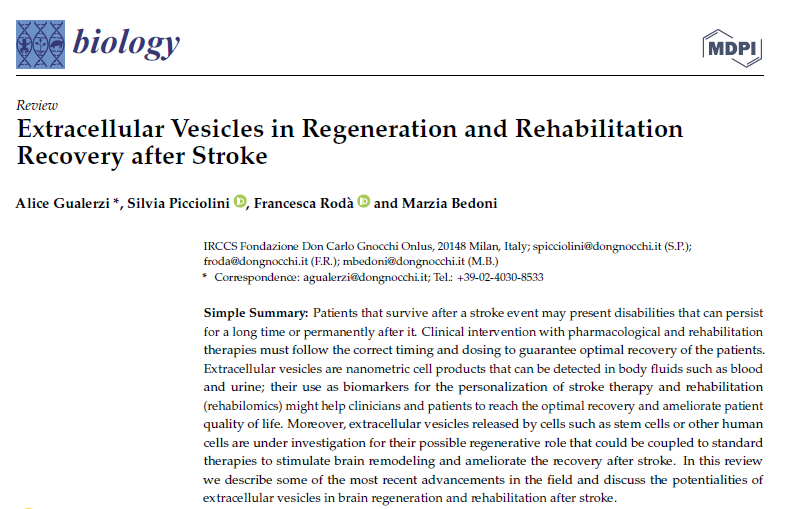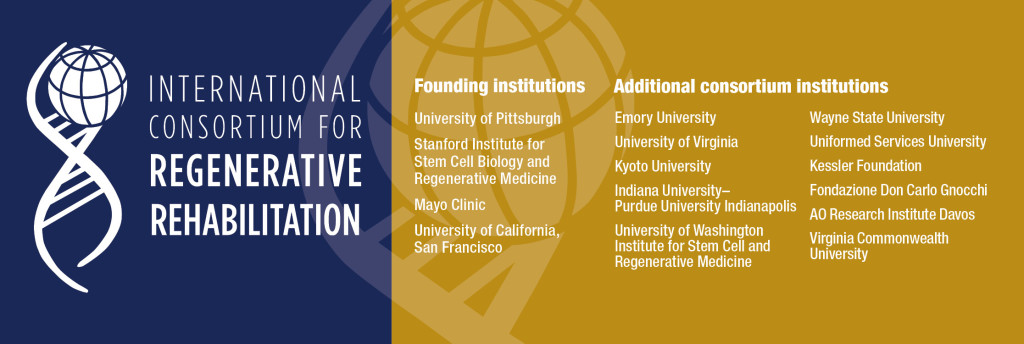Stroke is one of the leading cause of permanent disability and death worldwide.
Rehabilitation can favor the restoration of normal brain function by enhancing the naturally occurring processes of the brain.
Extracellular vesicles are naturally secreted nanoparticles involved in brain regeneration.
The researchers of the Laboratory of Nanomedicine and Clinical Biophotonics of Fondazione Don Carlo Gnocchi have written a brief review that summarizes the main processes occurring in the brain after stroke injury and how extracellular vesicles mediate communication and repair of the lesioned areas.
The LABION team wants to sensitize readers about the emerging importance not only of classical rehabilitation but also of regenerative rehabilitation in recovery after stroke.
The application of nanomedicine strategies and techniques to the study of extracellular vesicles can foster applied research and speed up their translation to clinics.
Regenerative rehabilitation is “a branch of medicine that is aimed at the restoration or establishment of normal function after loss due to injury, such as stroke events, aging, or congenital defects”.
Fondazione Don Gnocchi, thanks to LABION, is part of the International Consortium for Regenerative Rehabilitation (ICRR) funded by NIH AR3T program.
The ICRR aim is to sensibilize researchers and clinicians about the importance of pairing exercise and regenerative medicine therapies to favor regeneration processes.
“Regenerative rehabilitation pairs exercise principles with regenerative therapies to facilitate and enhance regeneration and repair, but only a few studies have recently reported about the combination of cell therapy and motor rehabilitation to enhance recovery [6].”
Enjoy your reading! 🙂






